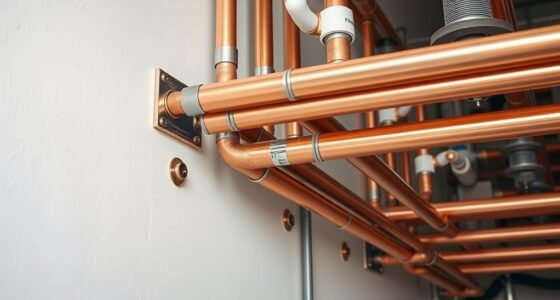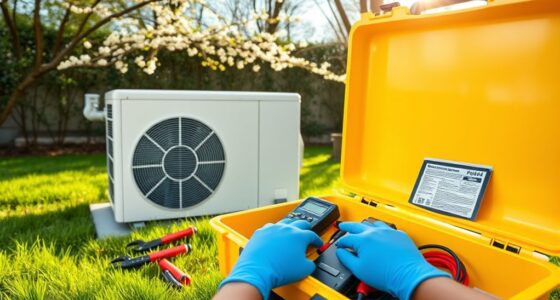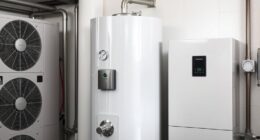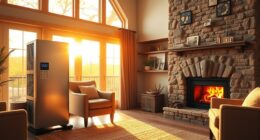Are you ready to dive into the world of installing heat pumps?
Translation: Ready to dive into the world of installing heat pumps?
Well, buckle up because we’ve got a beginner’s guide that will take you through every step of the process.
From understanding the different types of heat pumps to finding the right professionals for the job, we’ve got you covered.
Get ready to learn how to properly size your heat pump, select the ideal location for installation, and maintain your system for years to come.

Let’s get started!
Key Takeaways
- Heat pumps transfer heat from one place to another and can both heat and cool your home.
- There are two types of heat pumps: air source heat pumps and ground source heat pumps.
- The size of your heat pump should be determined by factors such as climate, insulation levels, and the size of your home.
- When selecting the ideal location for heat pump installation, consider factors such as accessibility, ventilation, noise considerations, and protection from extreme weather conditions.
Understanding Heat Pumps: A Beginner’s Overview
We’ll start by giving you a basic understanding of how heat pumps work.
Heat pumps are highly efficient heating and cooling systems that transfer heat from one place to another. They work by extracting heat from the air, ground, or water source and transferring it to your home during winter. In the summer, they reverse the process, removing heat from your home and releasing it outside.
This process is achieved through the use of refrigerant, which absorbs and releases heat as it evaporates and condenses.
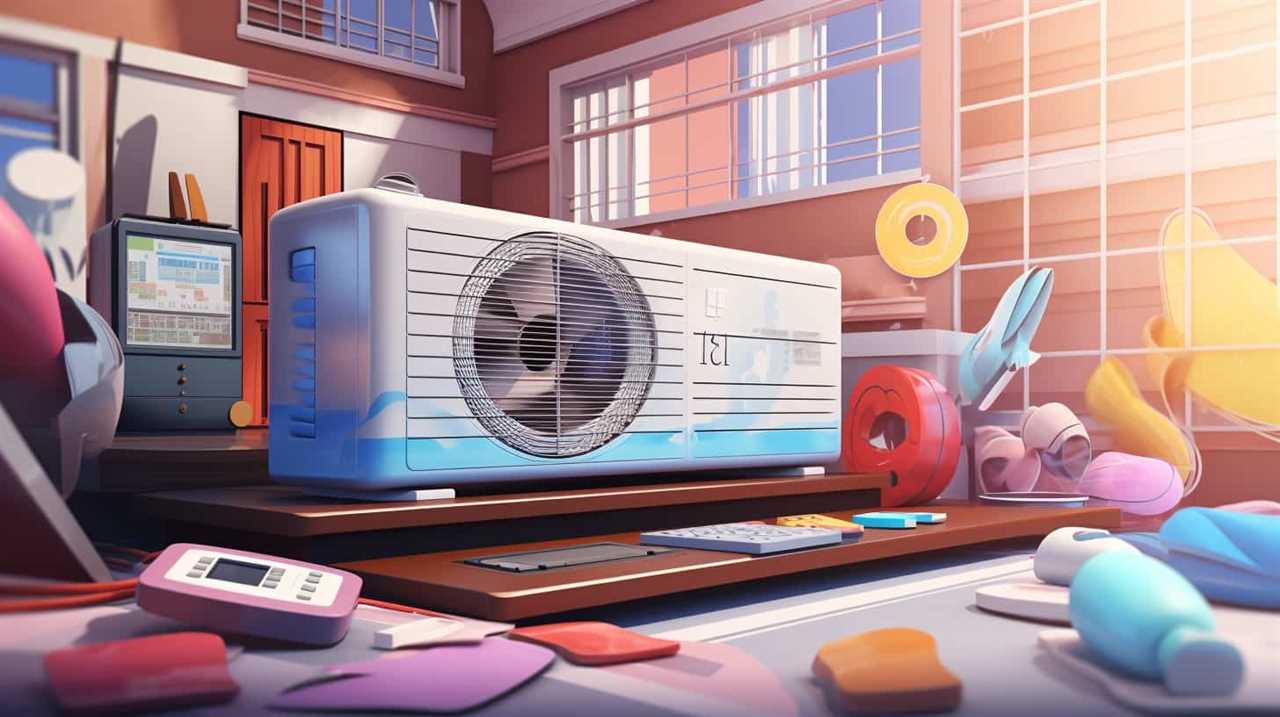
One of the key benefits of heat pumps is their high efficiency. Unlike traditional heating and cooling systems, heat pumps can provide up to four times more energy than they consume. This results in significant energy savings and lower utility bills.
Additionally, heat pumps offer the advantage of being able to both heat and cool your home, providing year-round comfort.
Types of Heat Pumps: Which One Is Right for You
There are several different types of heat pumps available, so it’s important to understand which one is right for your specific needs. When considering the type of heat pump to install, it’s essential to consider factors such as heat pump efficiency and heat pump cost.
One common type of heat pump is the air source heat pump, which extracts heat from the outdoor air and transfers it indoors. This type of heat pump is typically more affordable and easier to install, making it a popular choice for many homeowners.
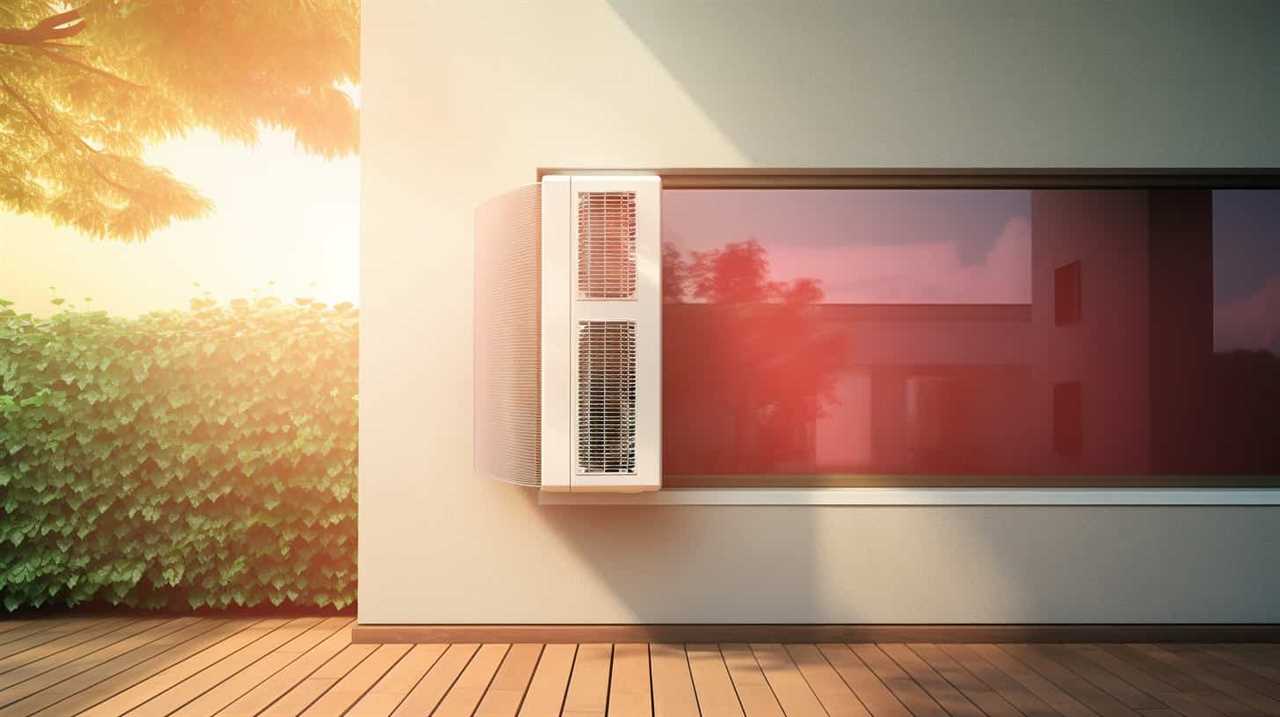
Another option is the ground source heat pump, also known as a geothermal heat pump. This type of heat pump utilizes the constant temperature of the ground to provide efficient heating and cooling. Although ground source heat pumps tend to have higher upfront costs, they can provide significant energy savings over time.
It’s important to weigh the benefits and costs of each type of heat pump to determine the best fit for your specific requirements. Understanding the different types of heat pumps will help you make an informed decision when it comes to selecting the right one for your home.
In the next section, we’ll discuss how to properly size your heat pump to ensure it meets your heating and cooling needs.
Sizing Your Heat Pump: Determining the Proper Capacity
To accurately determine the proper capacity for your heat pump, we’ll need to consider a few factors. It’s important to size your heat pump correctly to ensure optimal performance and energy efficiency. Here are some key considerations:
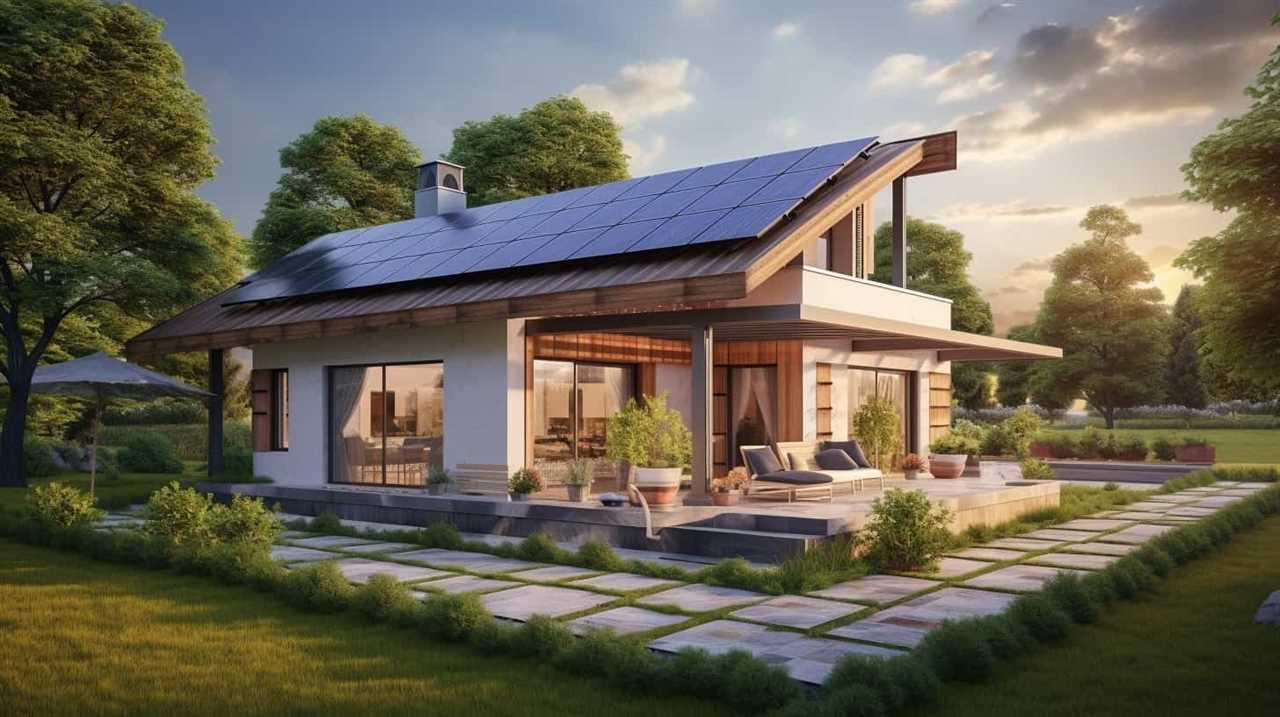
-
Climate: The climate in your area plays a significant role in determining the size of your heat pump. Cold climates require a larger capacity to provide sufficient heating.
-
Insulation: The level of insulation in your home affects heat loss. Well-insulated homes require a smaller heat pump capacity compared to poorly insulated ones.
-
Square footage: The size of your home is another important factor. Larger homes require a higher capacity heat pump to effectively heat or cool the space.
-
Proper maintenance: Regular maintenance is crucial to ensure your heat pump operates at its optimum capacity. This includes cleaning filters, checking refrigerant levels, and inspecting electrical connections.
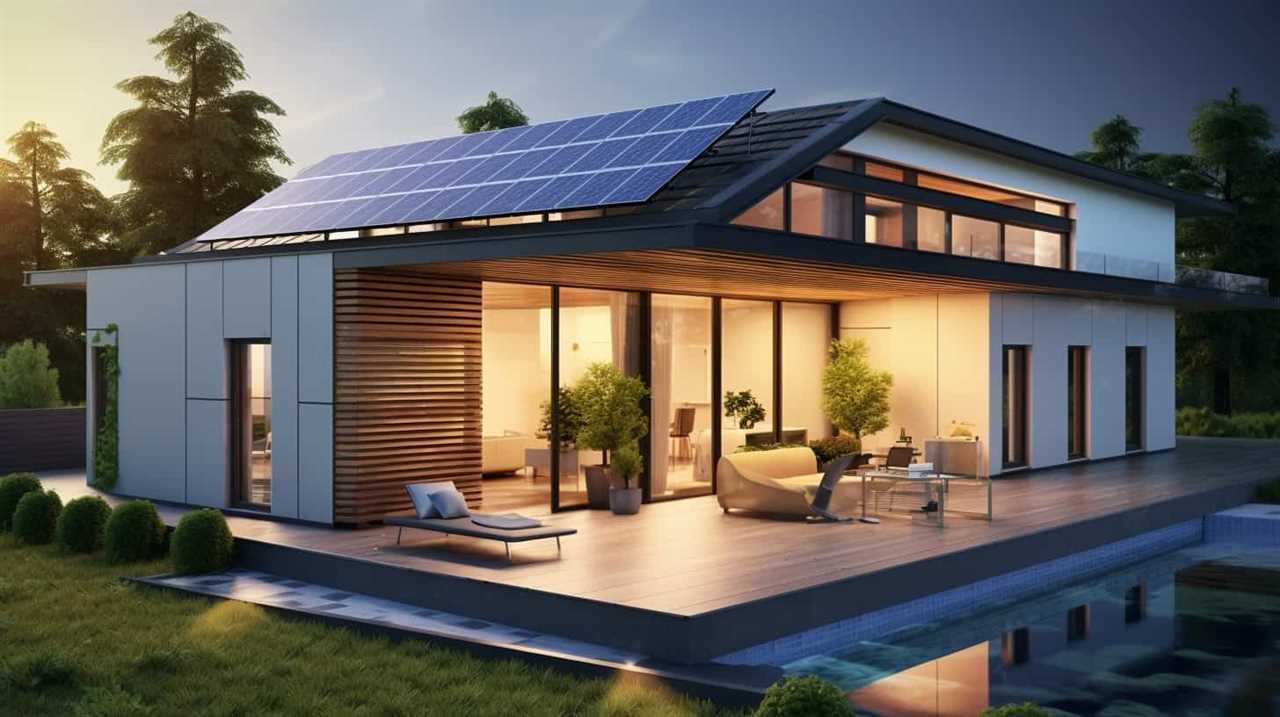
Selecting the Ideal Location for Heat Pump Installation
When selecting the ideal location for heat pump installation, there are several key points to consider.
Firstly, you need to decide whether to install the heat pump indoors or outdoors, as this can impact accessibility and space requirements.
Additionally, noise levels should be taken into account, as some heat pumps can produce significant noise during operation.
Indoor or Outdoor
We should consider several factors when determining the ideal location for heat pump installation.
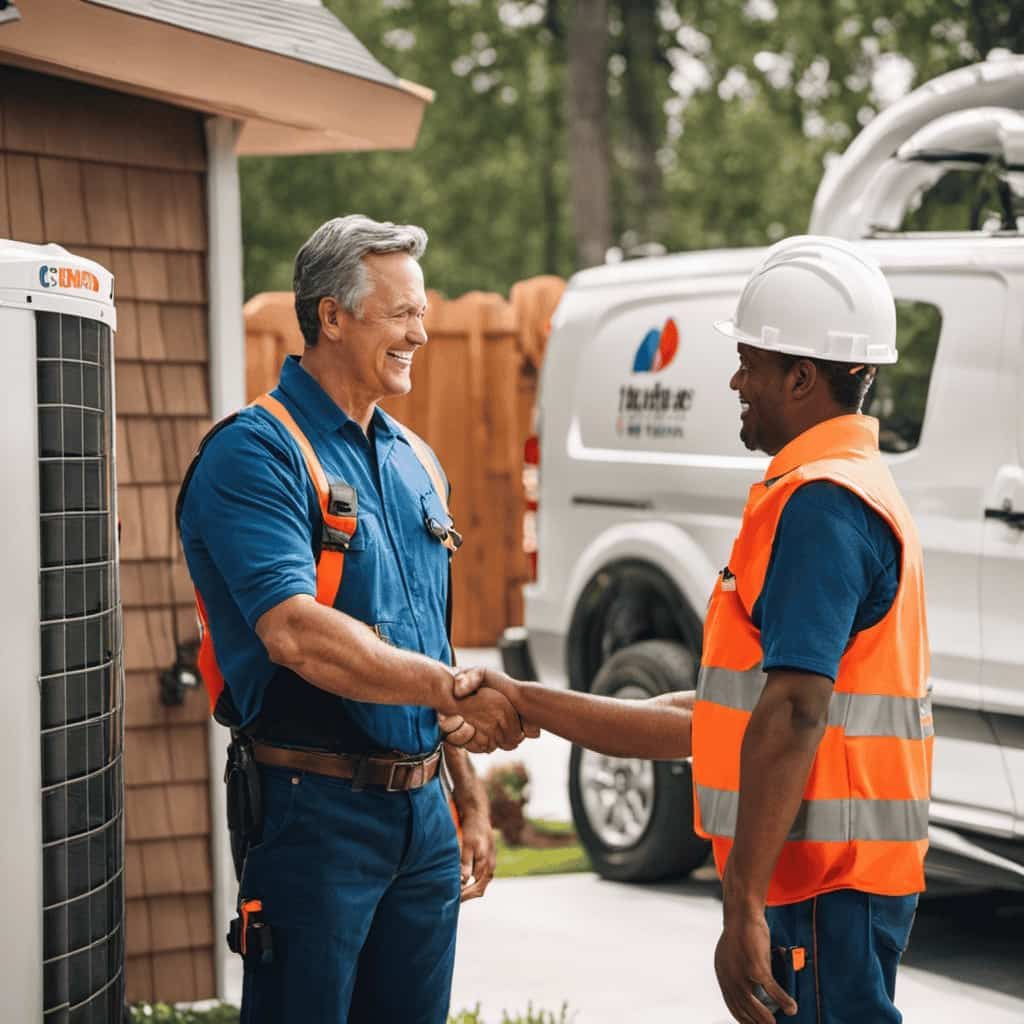
Indoor Installation:
- Requires sufficient indoor space for the heat pump unit.
- Access to electrical connections and drainage systems.
- Adequate ventilation to ensure proper airflow and prevent overheating.
- Noise considerations for the indoor environment.
Outdoor Installation:
- Sufficient outdoor space to accommodate the heat pump unit.
- Accessibility for maintenance and repairs.
- Protection from extreme weather conditions, such as direct sunlight or heavy rain.
- Proper clearance from surrounding objects to ensure optimal performance.
The decision between indoor and outdoor installation depends on the specific requirements of your property and the availability of suitable locations. Consulting with a professional heat pump installation service can help you make the best choice for your needs.
Accessibility and Space
Our first step in determining the ideal location for heat pump installation is assessing the accessibility and available space. When considering accessibility, it’s important to evaluate any potential challenges that may arise during the installation process. This includes factors such as the distance from the main electrical panel and the ease of access for maintenance and repairs.

Additionally, space utilization is another crucial aspect to consider. Heat pumps require adequate space for proper airflow and ventilation. It’s essential to ensure that there’s enough clearance around the unit to allow for proper operation and maintenance.
By carefully assessing the accessibility and available space, we can determine the best location for heat pump installation that maximizes efficiency and ease of use.
Now, let’s move on to the next section, where we’ll discuss the importance of considering noise levels.
Consider Noise Levels
Let’s take into account noise levels when selecting the ideal location for heat pump installation. Noise reduction is an important consideration to ensure a comfortable and peaceful environment for your customers.
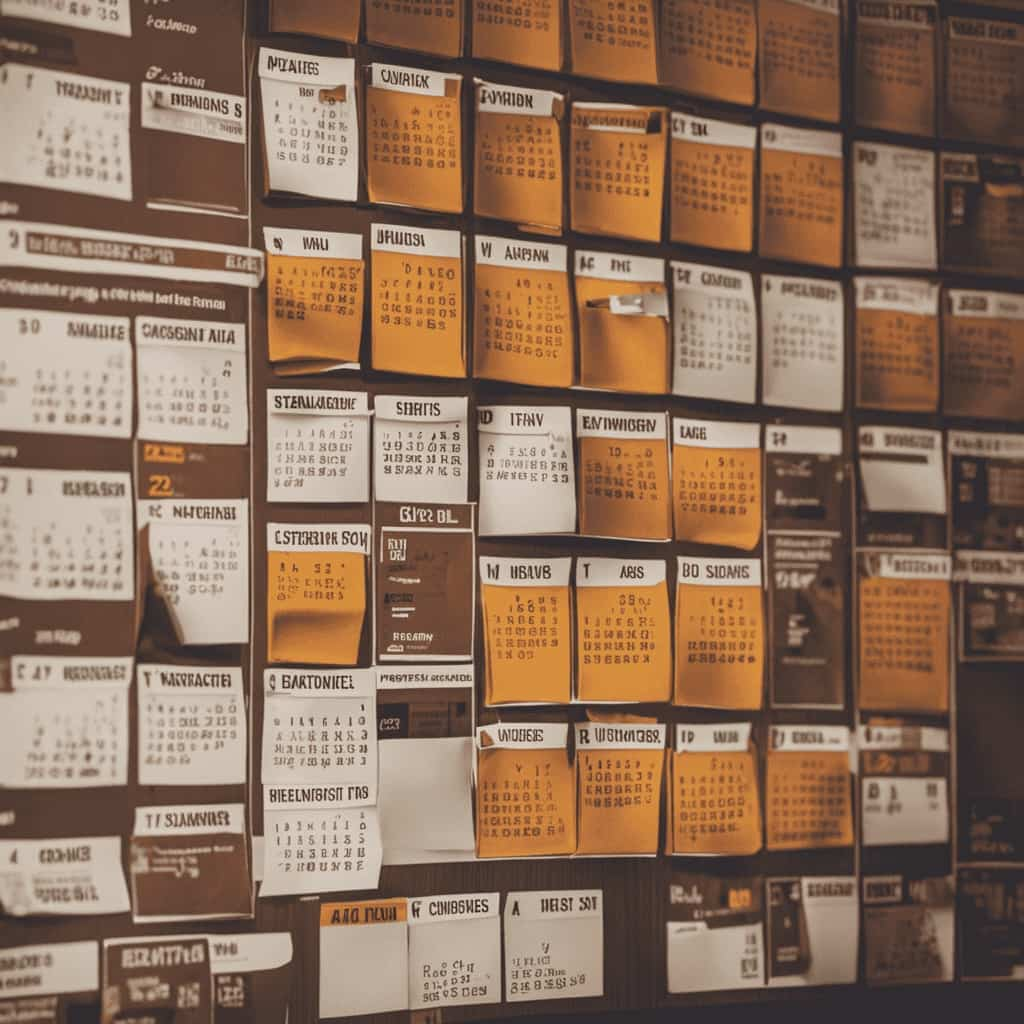
Here are some soundproofing techniques to minimize noise levels:
-
Location: Choose a spot away from bedrooms, living areas, and outdoor seating areas to reduce noise disturbance.
-
Sound barriers: Install natural or man-made sound barriers like fences, walls, or shrubs to block the noise from reaching sensitive areas.
-
Vibration isolation: Use vibration isolation pads or mounts to minimize the transfer of noise and vibrations.
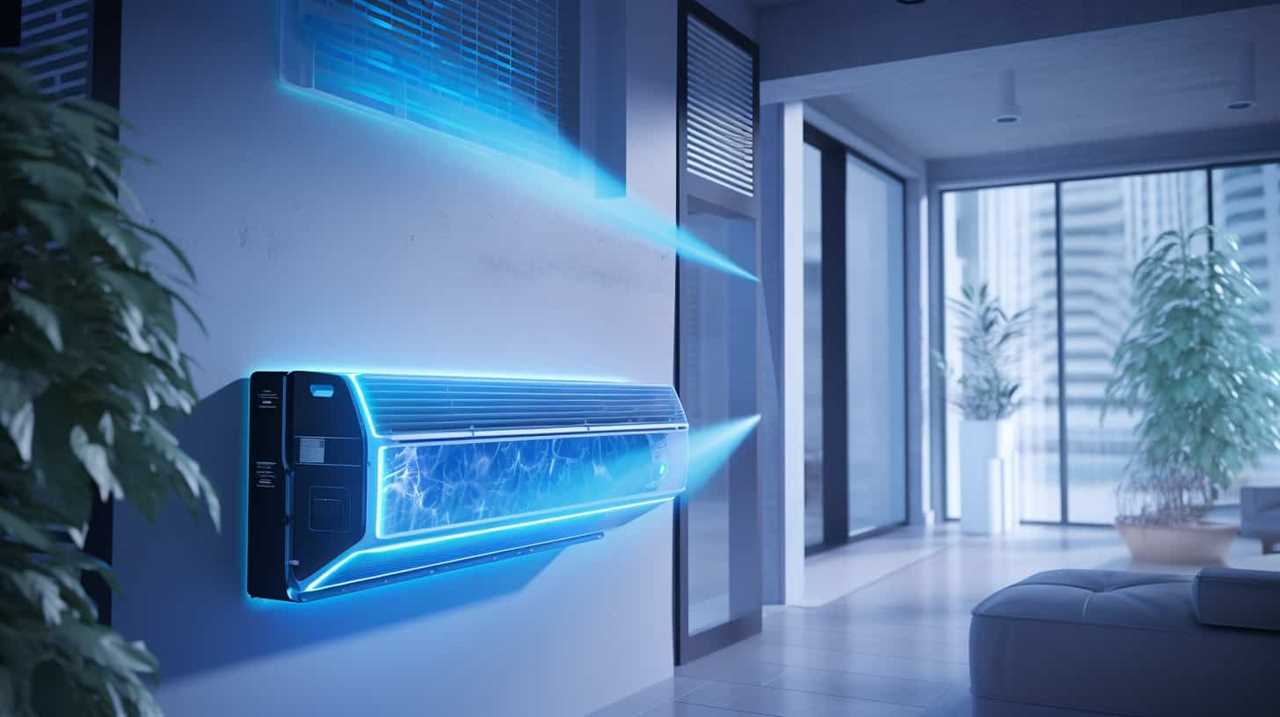
-
Enclosures: Consider installing an enclosure around the heat pump to contain and reduce noise levels.
Preparing Your Home for Heat Pump Installation
Before starting the heat pump installation, it’s important to ensure that our home is properly prepared. This involves conducting pre-installation inspections and meeting the necessary electrical requirements.
The inspections should include checking the condition of the existing ductwork, assessing the insulation levels, and evaluating the overall energy efficiency of the home.
Additionally, it’s crucial to determine if the electrical system can handle the power demands of the heat pump. This can be done by consulting with a qualified electrician who can assess the current electrical setup and make any necessary upgrades or modifications.
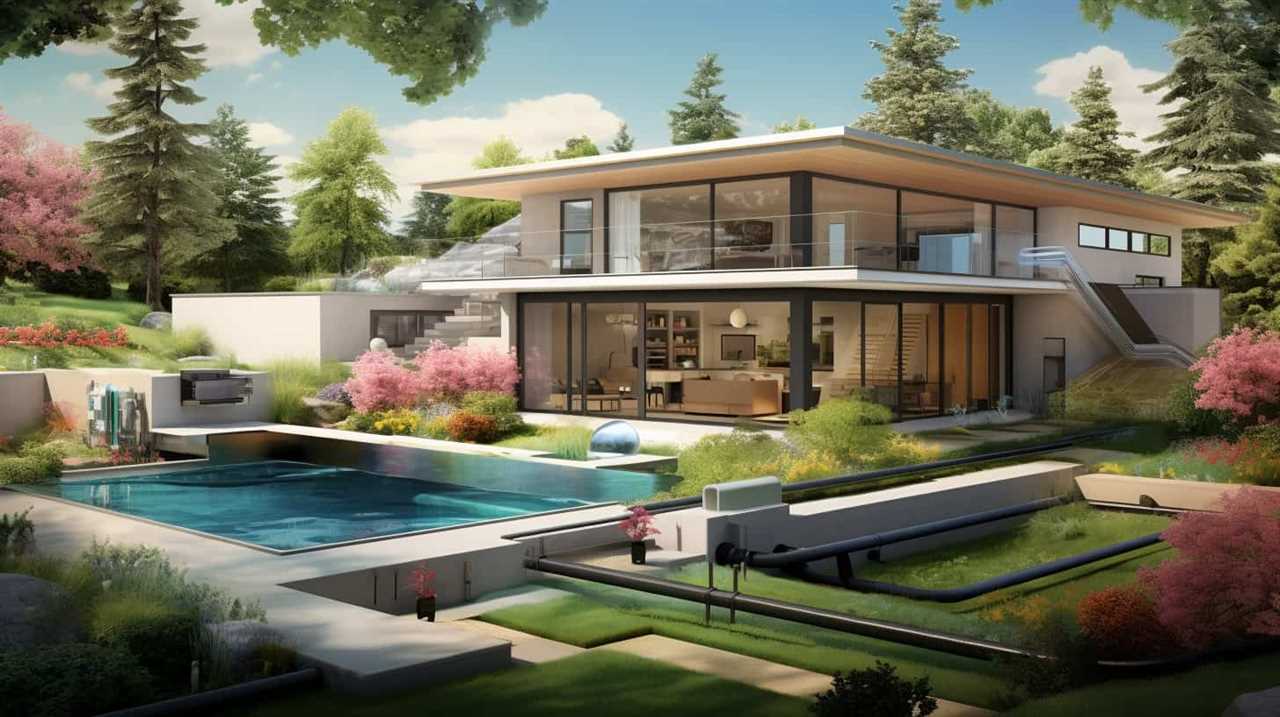
By taking these steps, we can ensure that our home is ready to accommodate the heat pump installation and maximize its efficiency and performance.
Now that our home is prepared for heat pump installation, the next step is finding the right professionals to carry out the job.
Finding the Right Heat Pump Installation Professionals
We should start by researching and contacting several reputable heat pump installation professionals in our area. Here are some key considerations to keep in mind during this process:
-
Cost considerations:
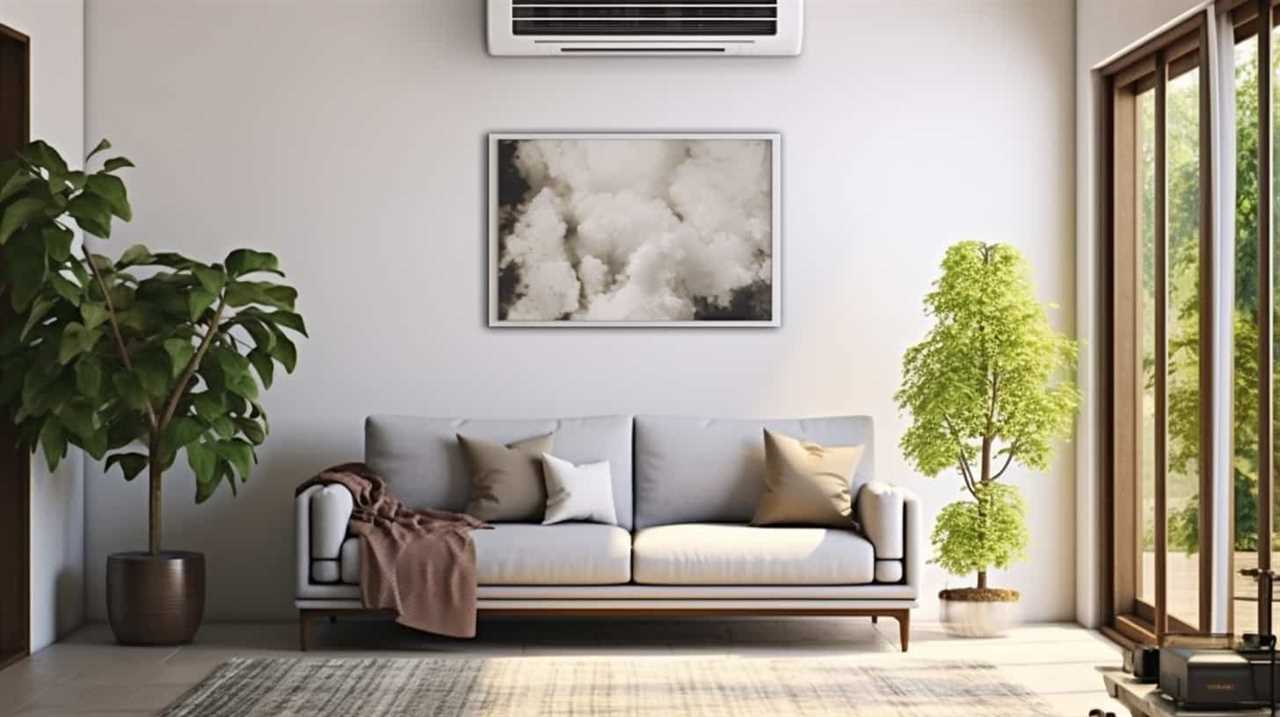
-
Obtain multiple quotes from different professionals to compare prices.
-
Remember that the lowest price may not always be the best option; consider the overall value and quality of the service provided.
-
Checking credentials:
-
Verify that the professionals are licensed and insured.

-
Check if they’ve any certifications or memberships in professional organizations.
The Installation Process: Step-by-Step Guide
Now let’s move on to the installation process and discuss the required equipment and tools, safety precautions to take during installation, as well as common challenges you may encounter.
Having the right equipment and tools is crucial for a successful heat pump installation, so we’ll cover what you’ll need.
We’ll also highlight important safety measures to ensure a secure installation process.

Lastly, we’ll address common challenges that may arise during installation and provide tips on how to overcome them effectively.
Required Equipment and Tools
To complete the heat pump installation, we’ll need several essential equipment and tools. Here is a list of the items required for a successful installation:
-
Heat pump unit: This is the main component of the system that transfers heat between the indoors and outdoors.
-
Refrigerant lines: These copper pipes connect the indoor and outdoor units and carry the refrigerant.
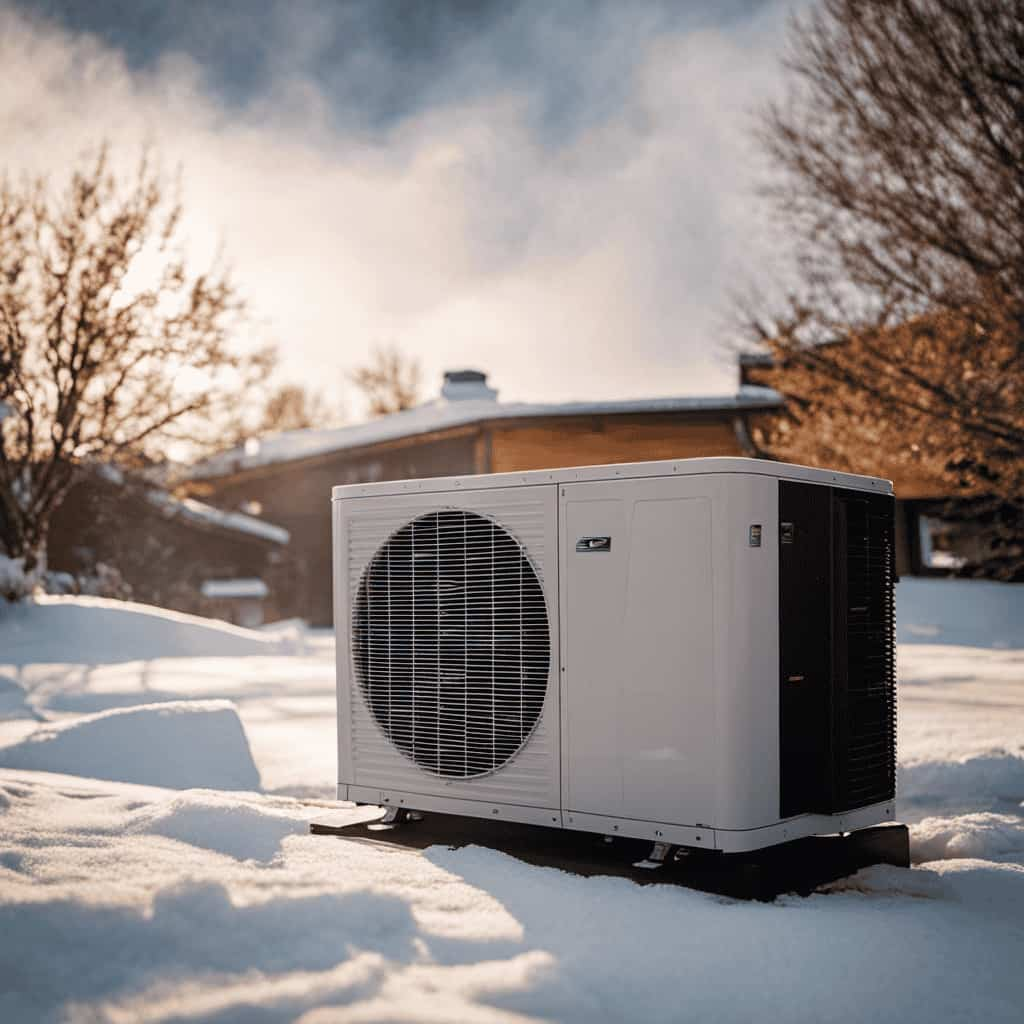
-
Condenser pad: A sturdy base on which the outdoor unit is placed to ensure stability and reduce vibrations.
-
Power tools: Tools such as drills, saws, and wrenches are necessary for cutting, drilling, and securing the equipment.
Having these tools and equipment readily available will facilitate the installation process and ensure that the heat pump is installed correctly.
It’s important to note that safety precautions should be taken when operating power tools and working with refrigerant lines.
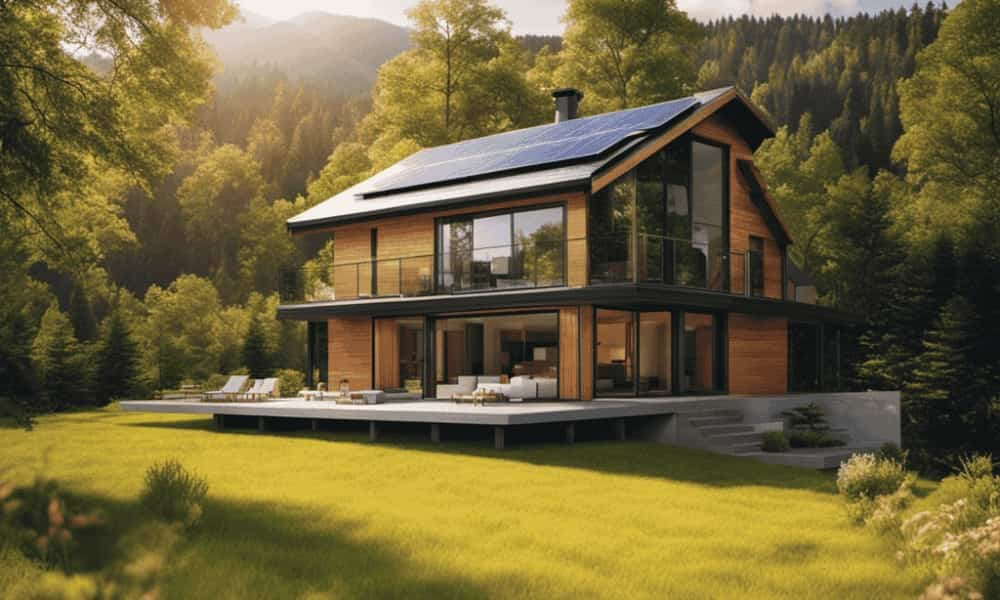
Safety Precautions During Installation
During the installation process, we prioritize safety precautions to ensure a secure and accident-free environment. Ensuring worker safety is our top priority, and we strictly adhere to safety protocols and guidelines throughout the installation process. To emphasize the importance of safety, we have created a table below outlining some key safety precautions that our technicians follow:
| Safety Precautions | Guidelines |
|---|---|
| Personal protective equipment | Technicians always wear appropriate PPE, including gloves, safety glasses, and protective clothing. |
| Electrical safety | Before starting any electrical work, technicians turn off the power and use lockout/tagout procedures. |
| Proper lifting techniques | Technicians are trained in proper lifting techniques to prevent back injuries and strain. |
| Fire safety | Fire extinguishers are readily available, and technicians are trained in fire safety procedures. |
Common Installation Challenges
Our team encounters various common challenges during the installation process, but we’re well-prepared to handle them efficiently. Here are some of the challenges we often face:
-
Obtaining installation permits: Before starting the installation, it’s crucial to obtain the necessary permits from local authorities. This can be a time-consuming process, but our team is experienced in navigating the permit application and approval process.
-
Addressing electrical requirements: Heat pumps require a stable and adequate electrical supply to function properly. Our technicians are trained to assess the electrical capacity of your home and make any necessary upgrades or modifications to ensure the heat pump operates safely and efficiently.
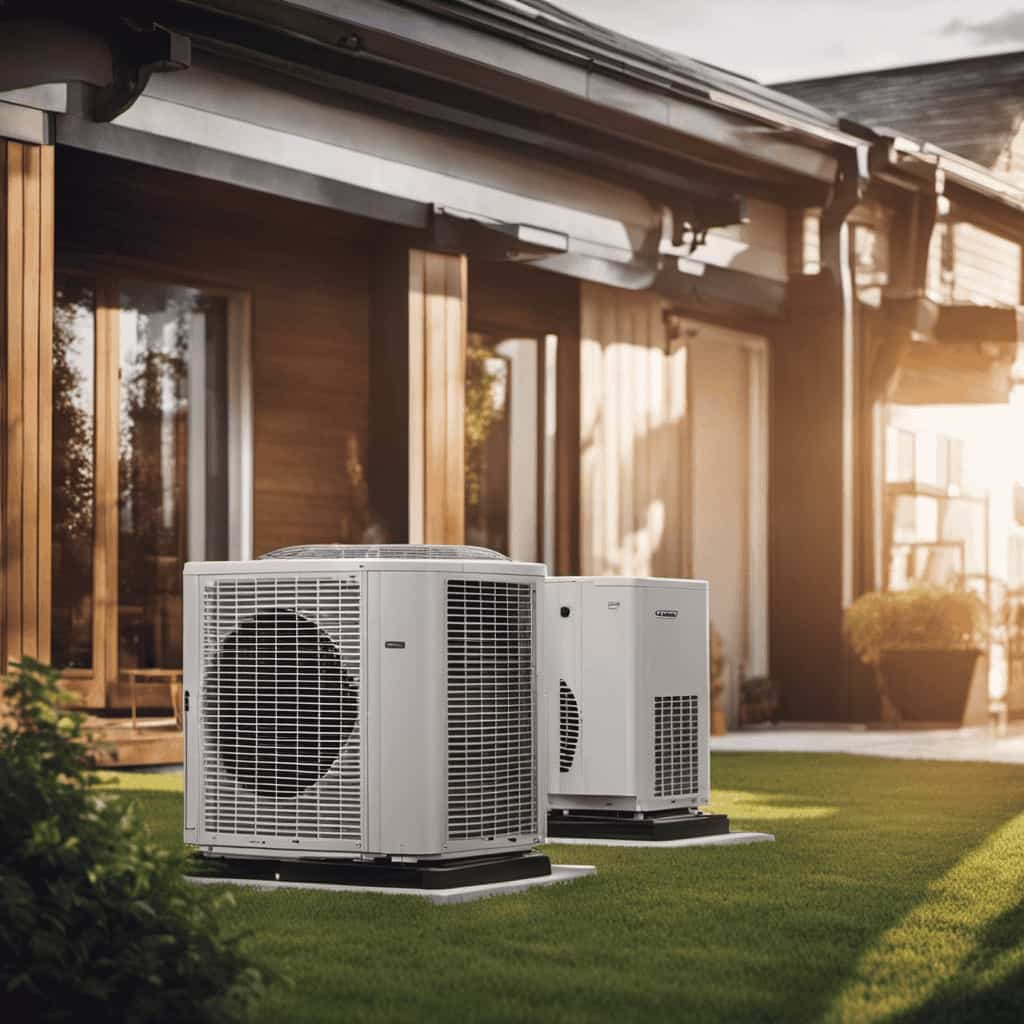
-
Dealing with space constraints: Heat pumps require sufficient space for installation. If space is limited, our team will work with you to find creative solutions, such as utilizing wall-mounted or compact units, to accommodate the heat pump in your home.
-
Managing ductwork installation: In some cases, existing ductwork may need to be modified or extended to accommodate the heat pump system. Our technicians have the expertise to assess and install the necessary ductwork, ensuring proper airflow and distribution throughout your home.
Maintaining and Troubleshooting Your Heat Pump System
We regularly encounter issues with our heat pump system, requiring us to perform maintenance and troubleshooting tasks. To help you keep your heat pump running smoothly, here are some troubleshooting tips and a maintenance checklist:
| Issue | Possible Cause | Solution |
|---|---|---|
| Heat pump not | Thermostat settings | Check thermostat settings and |
| providing heat | adjust if necessary. | |
| —————— | ————————– | ————————————- |
| Heat pump not | Power supply | Check power supply and ensure |
| turning on | it is connected properly. | |
| —————— | ————————– | ————————————- |
| Heat pump | Air filters | Clean or replace air filters to |
| not cooling | improve airflow. | |
| —————— | ————————– | ————————————- |
| Heat pump | Refrigerant levels | Check refrigerant levels and |
| making strange | contact a professional if needed. | |
| noises |
Frequently Asked Questions
How Much Does a Heat Pump Installation Cost?
The cost of a heat pump installation depends on various factors, such as the size of the unit, complexity of the installation process, and any additional requirements. It is important to consider these factors when determining the overall cost.
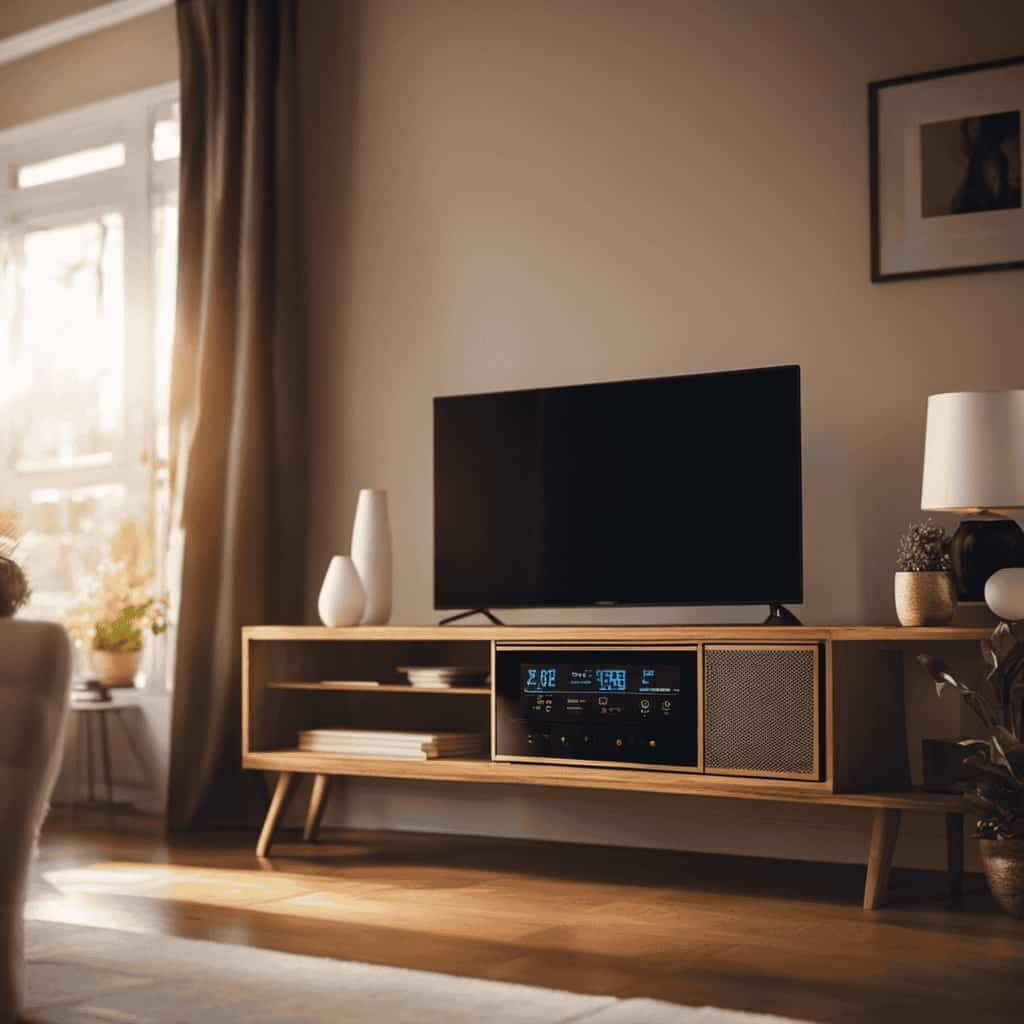
Are There Any Rebates or Incentives Available for Heat Pump Installation?
Yes, there are rebate programs and government incentives available for heat pump installation. These programs offer financial assistance, making it more affordable to install a heat pump and save money on energy bills.
Can a Heat Pump Be Installed in an Older Home With Existing Heating Systems?
Yes, a heat pump can be installed in an older home with existing heating systems. However, it’s important to assess heat pump compatibility and consider retrofitting options to ensure efficient and effective integration.
How Long Does the Installation Process Typically Take?
The installation time of a heat pump depends on various factors such as the size of the system, the complexity of the installation, and any necessary modifications. On average, it can take anywhere from a few hours to a couple of days.
What Kind of Maintenance Does a Heat Pump System Require?
Regular inspections, cleaning of filters and coils are necessary for heat pump maintenance. Troubleshooting common issues and recognizing signs that indicate the need for professional maintenance are also important aspects of keeping a heat pump system running smoothly.
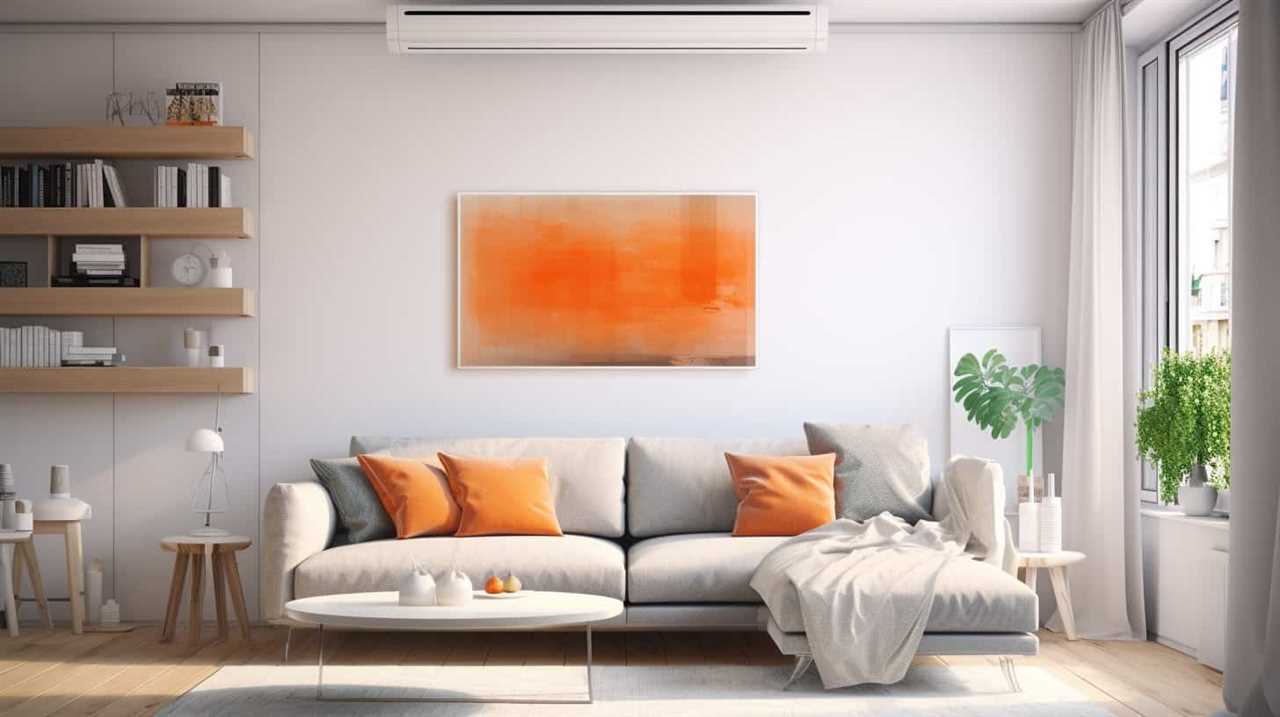
Conclusion
In conclusion, installing a heat pump can be a daunting task for beginners, but with the right knowledge and professional help, it can be a smooth and efficient process.
Just like a conductor leading an orchestra, the heat pump installation professionals ensure that all the components work together harmoniously to provide you with a comfortable and energy-efficient home.
So, don’t hesitate to take the leap and enjoy the benefits of a well-installed heat pump system.


